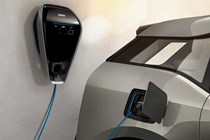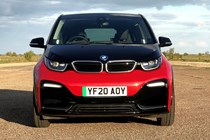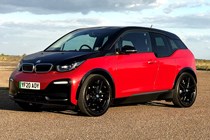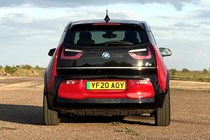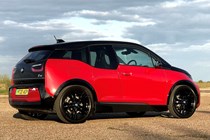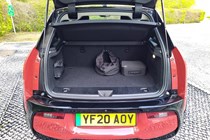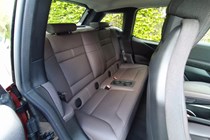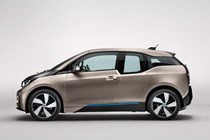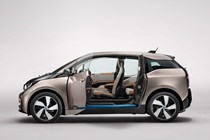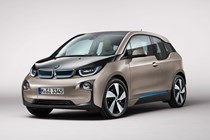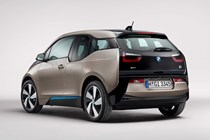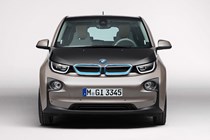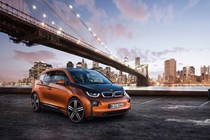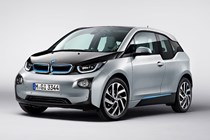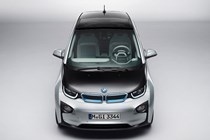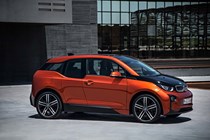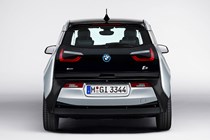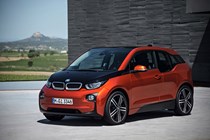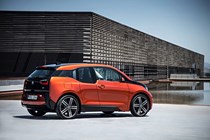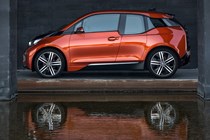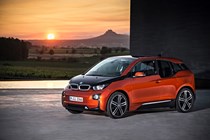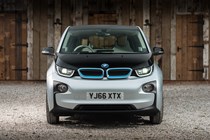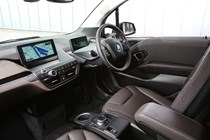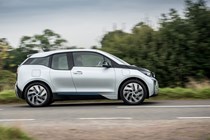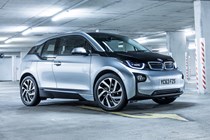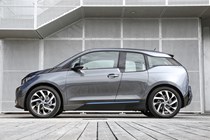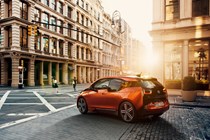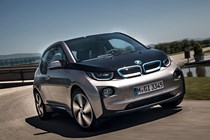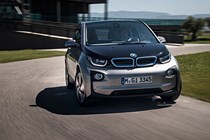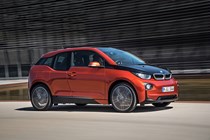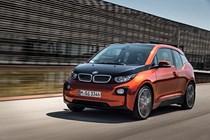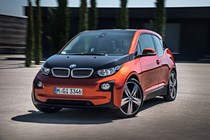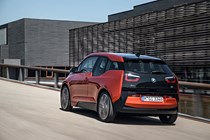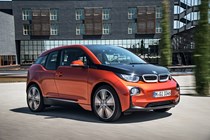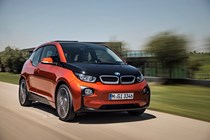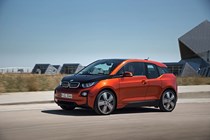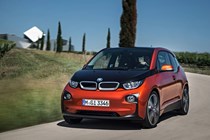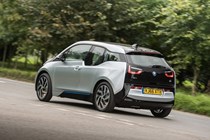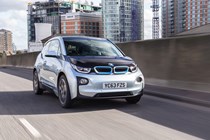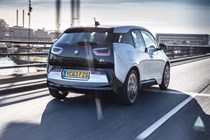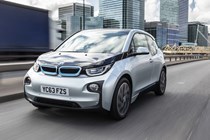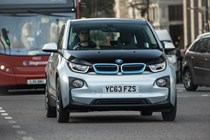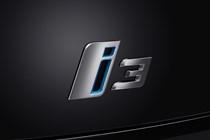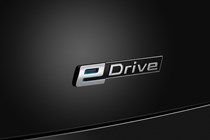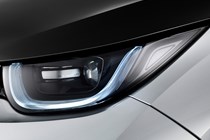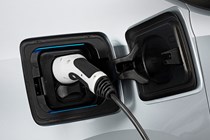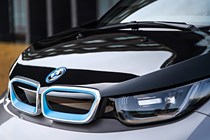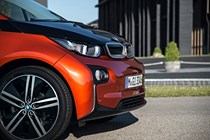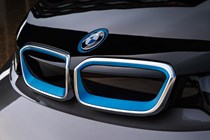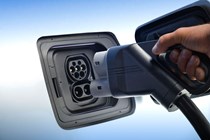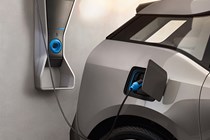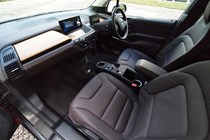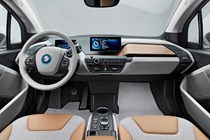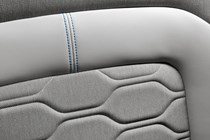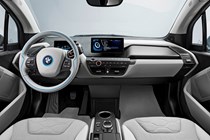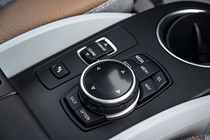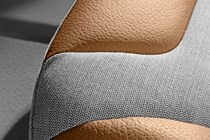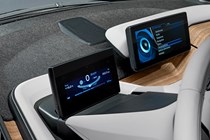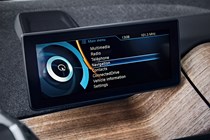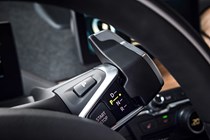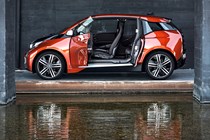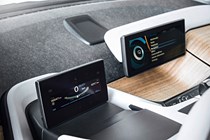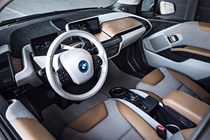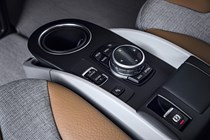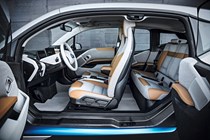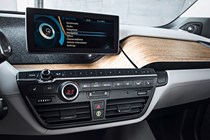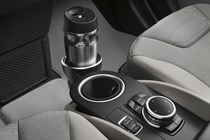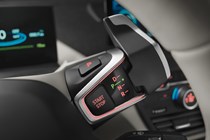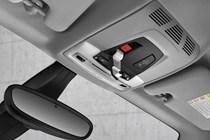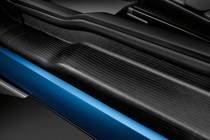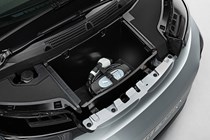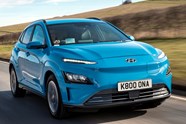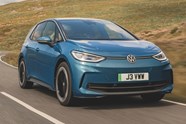
BMW i3 Hatchback (2013-2022) review
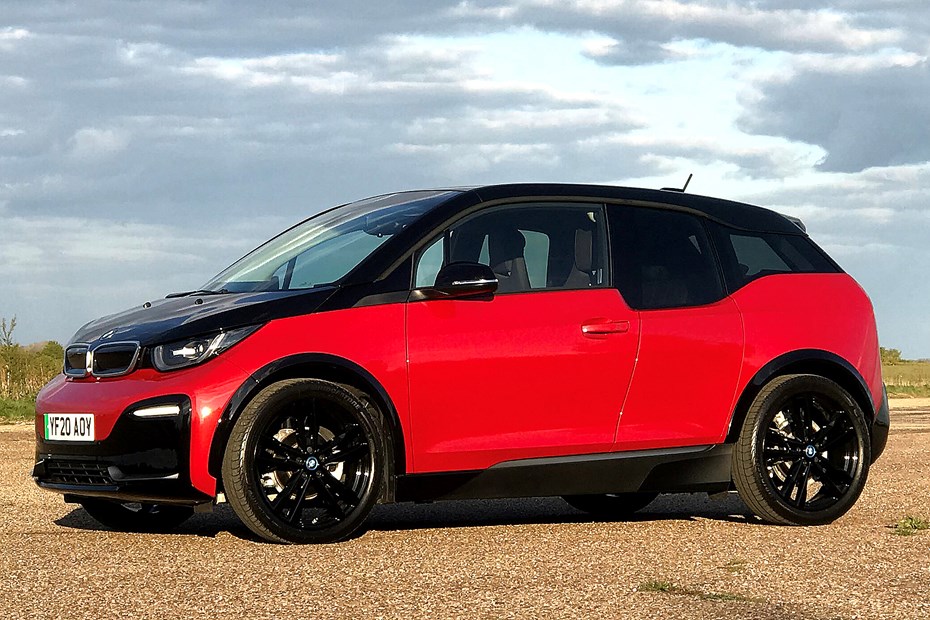
At a glance
| Price new | £30,980 - £46,650 |
|---|---|
| Used prices | £3,149 - £18,884 |
| Road tax cost | £20 - £195 |
| Insurance group | 21 - 29 |
Get an insurance quote with

|
|
| Fuel economy | 3.8 - 4.1 miles/kWh |
| Range | 173.4 - 190.8 miles |
| Miles per pound | 6.0 - 12.1 |
| Number of doors | 5 |
| View full specs for a specific version | |
Available fuel types
Fully electric
Pros & cons
- Futuristic style
- Smooth, electric drive
- Excellent acceleration
- Tight turning circle
- Expensive to buy
- Small boot
- Lack of space in the back seats
- Uncomfortable ride
BMW i3 (13-22) rivals
Overview
Without getting too far ahead of ourselves, we’re probably safe in saying that the i3 was ahead of its time. But considering it was made between 2013-2022 and is the car that spearheaded BMW’s launch of its i sub-brand, the i3 is still a remarkably competitive used car in many other ways.
It’s a compact but pricey hatchback that is up against higher-spec Volkswagen ID.3s, the less prestigious Hyundai Kona and Kia Soul, as well as the Citroen e-C4. With the exception perhaps of the ID.3, the BMW feels more special and bespoke than any of those rivals. That’s not to say it’s better – but it does feel more up-to date than any car that’s been around as long as this one has any right to.
One of the key differences between the i3 and its rivals is its exotic construction, and partial reason for its modernity. It uses materials more usually found in supercars than city cars. The i3 is made from a mixture of lightweight aluminium for the chassis and carbonfibre-reinforced plastic for some structural parts and body panels.
It’s a simple model range, with just two versions to choose from. Buyers can opt for the 170hp i3 or the sportier 184hp i3s model, both of which have what BMW describes as a 120Ah battery, which equates to 42.2kWh. This storage capacity puts it well behind most of its rivals, though it’s fairly close to the entry-level 45kWh Volkswagen ID.3 or the 50kWh Citroen e-C4.
There are three interior trims to choose from: Loft, Lodge and Suite, which are interior packs (worlds in BMW-speak) that can be opted for £1,000, £1,500 and £2,000 respectively.
It’s a well-equipped car out of the box, with the standard i3 coming with sat-nav, heated front seats, LED headlights, rear parking sensors, climate control, a DAB radio, automatic lights and rain-sensing wipers as standard. The i3s adds 20-inch alloy wheels, an additional Sport driving mode, and a contrasting A-pillar and roof, painted in high-gloss black.
There’s plenty of connected technology is standard on the BMW i3, with a smartphone app allowing the driver to monitor the car’s status from afar and even set it to charge-up or heat the cabin remotely. Driving routes can be sent directly to the sat-nav in the car – and if the i3 doesn’t expect you’ll make your destination on a single charge, it will advise you to switch to Eco Pro or Eco Pro+ mode and locate the nearest charging point en route.
The range for the standard i3 is 191 miles according to WLTP testing. That figure drops to 176 miles for the higher-performance i3s model. You’ll be able to charge your i3 from a domestic three-plug socket in around 10 hours, or as quickly as 30 minutes for an 80% charge using a public fast charger.
Owners can also buy a bespoke BMW i Wallbox for their home, which can charge the car from zero to 80% in four hours. The i3’s home charging point is warranted for three years, just like the car.
Click through the next few pages to read everything you need to know about the BMW i3 including its practicality, how much it costs to run, what it’s like to drive – and whether we recommend buying one.



